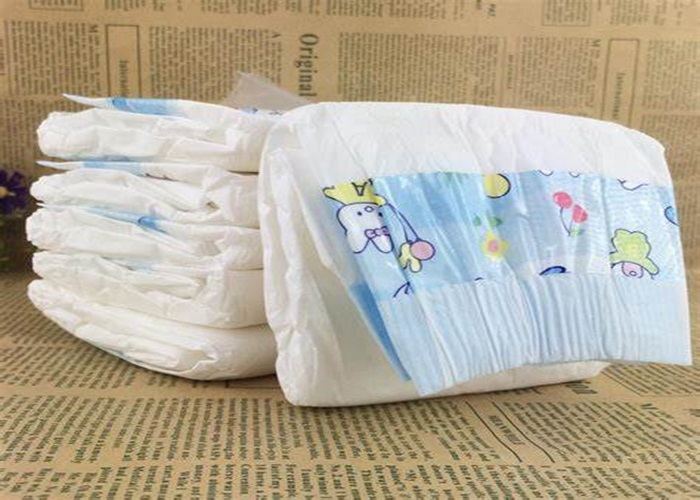One of the most common questions new parents ask is about diapering. Specifically, how many diapers does a newborn use on average? As new parents adjust to the demands of a newborn, it’s natural to wonder how often they will need to change their baby’s diaper and how many diapers they should have on hand. Diapering can be a significant part of your daily routine, especially in the early days, so understanding the average diaper usage can help you be better prepared.
In this article, we will explore the average number of diapers a newborn uses, how often diaper changes should happen, factors that may influence diaper frequency, and tips for managing diapering during those crucial first few months.
Factors Influencing Diaper Usage
Age of the Newborn
First Few Days: In the initial days after birth, newborns pass meconium, a thick, tar – like substance. During this period, they typically have 3 – 4 meconium – filled diapers per day. As their digestive system starts to process milk, the frequency of diaper changes begins to increase.
First Month: Newborns in their first month are in a phase of rapid growth and high – frequency feeding. Their small stomachs can hold only a small amount of milk, leading to frequent feedings every 2 – 3 hours. This results in an average of 8 – 12 diapers per day. Breastfed babies may be on the higher end of this range as breast milk is easily digestible, often causing more frequent bowel movements.
2 – 3 Months: As the baby grows, their bladder and digestive systems develop. By 2 – 3 months, the number of diapers used per day may reduce slightly to 6 – 8. The baby’s bladder capacity increases, allowing them to hold urine for longer periods between diaper changes.
3 – 6 Months: Between 3 – 6 months, the average number of diapers used per day continues to decline, settling around 5 – 7. At this stage, the baby’s feeding patterns may become more regular, and their digestive system is more efficient at processing food, resulting in fewer but more formed bowel movements.
Feeding Method
Breastfeeding: Breast milk is highly nutritious and easily digestible. Breastfed babies often have more frequent bowel movements. They may have a bowel movement after each feeding, which can be as often as every 2 – 3 hours. This high frequency of bowel movements contributes to a relatively high number of diaper changes. Additionally, breast milk provides all the necessary hydration, and the baby’s urine output is also regular. As a result, breastfed newborns generally use 8 – 12 diapers per day in the first few months.
Formula – Feeding: Formula – fed babies have a different digestive experience. Formula is less easily digestible compared to breast milk, which can lead to firmer stools and fewer bowel movements. However, they still need to be fed frequently, especially in the early months. Formula – fed newborns usually use 6 – 10 diapers per day in the first few months. The number may be slightly lower than that of breastfed babies, but it can vary depending on the individual baby’s formula intake and digestive response.
Health and Activity Level
Health Conditions: A newborn’s health can significantly impact diaper usage. Illnesses such as diarrhea or urinary tract infections can increase the frequency of diaper changes. Diarrhea causes more frequent, loose stools, leading to a higher number of soiled diapers. Similarly, a urinary tract infection may cause the baby to urinate more frequently. On the other hand, if a baby is constipated, they may have fewer bowel movements, but the diaper may still need to be changed due to the discomfort caused.
Activity Level: More active babies may sweat more, and if they are bundled up, the moisture can contribute to a need for more frequent diaper changes. Also, active movement can sometimes lead to more frequent urination as the baby’s body is in motion. While it’s not always a significant factor, in some cases, it can add to the overall number of diapers used.
Special Considerations
Diaper Absorbency
High – absorbency diapers can hold more urine, reducing the number of wet diaper changes. However, this does not eliminate the need for bowel – movement – related diaper changes. Parents may find that with high – absorbency diapers, they can go a bit longer between wet diaper checks, especially during naps or at night. But it’s important to note that even with these diapers, the baby’s comfort and skin health should be monitored. If the diaper becomes too full, it can cause discomfort and potentially lead to skin irritation.
Fit of the Diaper
A well – fitting diaper is essential. A diaper that is too loose may leak, resulting in more frequent diaper changes as the baby’s clothes and bedding may get soiled. Conversely, a diaper that is too tight can be uncomfortable for the baby and may also cause leaks. Ensuring a proper fit helps maintain a consistent and reasonable number of diaper changes. It also reduces the risk of diaper rash as a well – fitting diaper can help keep the baby’s skin dry.


